Pulitzer Prize–winning author Adam Johnson talks about his new book, Fortune Smiles, fiction and voice, veterans and defectors, solar-powered robots and self-driving cars, and infrared baseball caps that can blind security cameras. ...more
I’ve been a sucker for redheads since the day in second grade when chubby Johnny with the glasses kissed me on the playground and told me I was his girlfriend. ...more
In my eight years as a Mad Men fan, the series has repeatedly prompted me to reflect on parenting. ...more
When you arrived, you reached under the mat to pick up the keys in an envelope. Inside, a note on the kitchen counter said help yourself to anything in the pantry or fridge. ...more
Author Deborah Reed discusses her latest novel, Olivay, the necessity of fire, Los Angeles anxiety, and how she found fulfillment at the edge of the American West. ...more
The Boat is an interactive graphic novel based on the acclaimed story by Nam Le. The project unites hand drawn artwork, animation, text, sound, and archive to explore this important moment in history. ...more
Analysis fails before this mysterious amalgam of silliness and sublimity. Or maybe I'm just a sucker for songs with cat whiskers in them. ...more
I want to break from a continued and systematic white supremacy so pervasive it is entrenched in the vernacular I use to express myself. ...more
Melissa Gira Grant talks sex workers’ rights, labor politics, the novelty of women’s sexuality, and her book, Playing the Whore: The Work of Sex Work. ...more
This was the first pure poetry I ever knew. Sung out loud more or less to no one on a theme of longing. Wife. Sons. Rags. Snow. Stalks of corn. ...more
I had to look back at the late nights when her voice has sung me out of sadness to sleep, back to those Saturday afternoons of my childhood, and ask myself what I had learned from her, as a musician and a woman. ...more
In Yearbook #3, Sarah Gerard talks about writing Binary Star, going to her ten-year high school reunion stoned, and growing up on the south side of St. Petersburg, Florida. ...more
David Lipsky, whose book was recently adapted into the movie The End of the Tour, discusses his career as a writer and journalist as it’s evolved in the twenty years since his road trip with David Foster Wallace. ...more
We live our lives and then relive them on the page in a relentless search for some nugget of discovery, some further comprehension of what it all means. ...more
Over one third of the women in my survey had been called “Thunder Thighs” at some point in their life. Many were still haunted by this. None of them interpreted “thunder” to mean “power. ...more
We were symbiotic, he and I. It was the ripping free from that symbiosis that felt so liberating when I flew out of Bulgaria. ...more
Yumi Sakugawa discusses her latest book, Ikebana, discovering meditation, exploring blank spaces, and drawing a world of sentient oranges and one-eyed monsters. ...more
HORN! brings us an illustrated review of Margaret Atwood's The Handmaid's Tale. ...more
For me, Bob Pollard became a messiah of the creative life, urging me forward for many years to come, in my new, somewhat shabby but inspired career. ...more
In Episode 35 of The Rumpus’s Make/Work host Scott Pinkmountain speaks with scholar Dru Farro about his role on the fringes of academia, his deeply ingrained American reluctance to seek medical attention, and his eventual and abstract creative goals. ...more
I wanted what Ari wanted: affirmation that I could be a good mother while making mistakes and having ugly, difficult thoughts. ...more
Author Christopher Bollen talks about his sophomore novel, Orient, secrets and privacy, sexual orientation in fiction, and the lost art of the whodunit mystery. ...more
The Rumpus Poetry Book Club chats with Ada Limón about her new book Bright Dead Things, writing love poems in an age of cynicism, and committing to places. ...more
The best thing about living in a foreign country where I don’t speak the language is the ability to slide into solitude wherever I am. ...more
Musician Owen Ashworth on his new album, Nephew in the Wild, literary influences, self-expression in songwriting, and how becoming a father has changed his work. ...more
As a writer, have I ever benefited from being Chinese? ...more
Being a teenager sucks. It’s not pretty or nice or sweet or kind. ...more
In this ongoing series, writers in all genres explore the intersection between our literary lives and practices and our BDSM and fetishistic lives and practices. ...more
Benjamin Percy discusses his latest novel, The Dead Lands, why it’s all about keeping language fresh, and his dream job writing for DC Comics. ...more








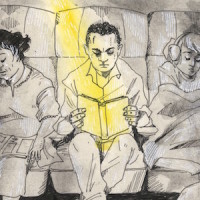

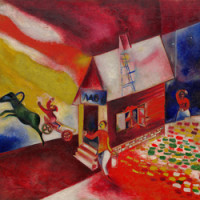
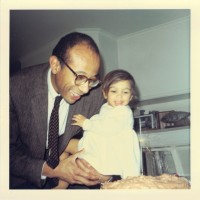
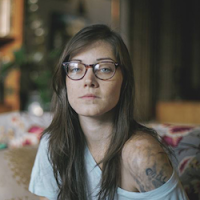














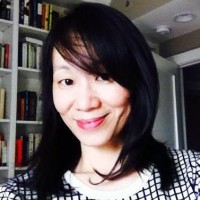


![Ben Percy au photo [cr. Jennifer Percy]](http://web.archive.org./web/20150928132623im_/http://therumpus.wpengine.netdna-cdn.com/wp-content/uploads/2015/08/Ben-Percy-au-photo-cr.-Jennifer-Percy-200x200.jpg)

